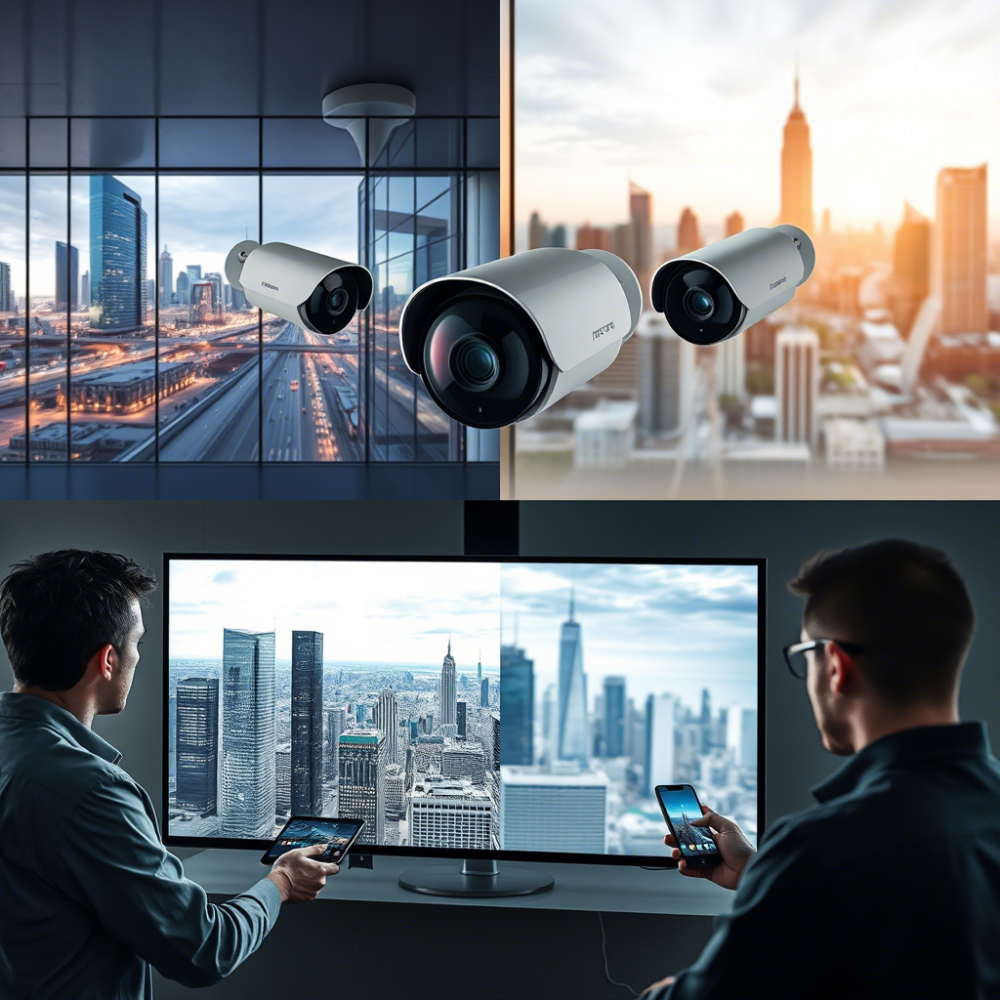
IP Cameras: A Revolution in the World of Modern Surveillance
Over the past decade, security and surveillance technologies have witnessed significant advancements, and Internet Protocol (IP) cameras have played a prominent role in this transformation. IP cameras have become the preferred choice for many organizations and individuals seeking security and protection, thanks to their advanced capabilities and ease of use.
What are IP cameras?
An IP (Internet Protocol Camera) camera is a type of digital camera that records video and transmits it over the Internet or a local area network (LAN) using the Internet Protocol, rather than relying on traditional analog cables used in older surveillance systems like DVRs.
Simply put, an IP camera can be considered a standalone device connected to the network, with its own IP address, and can be accessed and operated remotely through any internet-connected device such as a computer or smartphone.
How do IP cameras work?
IP cameras work similarly to webcams, but they are more advanced and offer multiple features. The camera connects to the internet via either a network cable (Ethernet) or a wireless connection (Wi-Fi), converts visual data into digital signals, and then sends this data directly to the network.
Recorded data can be stored on:
- Local recording device (such as NVR).
- Internal or external server.
- Cloud Storage.
Types of IP cameras
IP cameras are divided into two main types:
- Indoor IP Cameras:
- Used indoors.
- It features a compact design and is easy to install.
- They often contain features such as a microphone and speaker for voice communication.
- Outdoor IP Cameras:
- Resistant to weather conditions such as wind and rain.
- Supports Night Vision.
- They sometimes have LED lights or an audible alarm for added security.
Features of IP cameras
- Remote Access: You can monitor where you want from anywhere in the world as long as you are connected to the internet.
- High Resolution: Most IP cameras today offer Full HD or even 4K resolution, which helps capture details with great precision.
- Cloud storage: Ability to store videos on the cloud and retrieve them later.
- Integration with smartphone apps: Many cameras support their own apps on smartphones.
- Motion detection and face recognition: Some models are equipped with artificial intelligence technologies to analyze images and detect people or abnormal movements.
Uses of IP cameras
- Home security: monitoring homes and keeping an eye on children or the elderly.
- Commercial Security: Protecting businesses and shops.
- General surveillance: in airports, hospitals, schools, etc.
- Monitoring large projects: such as factories and warehouses.
Challenges and disadvantages of IP cameras
- Hacking: IP cameras can be a target for hacking if the software is not updated and security is not set up properly.
- Internet dependency: You need a stable internet connection to work effectively.
- Cost: Some high-spec IP cameras can be expensive.
Tips when choosing an IP camera
- Resolution: Choose a camera with a resolution appropriate for the location (720p, 1080p, 4K).
- Night vision range: especially if it will be placed outside.
- Wireless Connection: Make sure the camera is compatible with your home Wi-Fi network.
- Software and Security: Choose cameras from trusted companies with support for the latest security updates.
- Storage: Do you want local or cloud storage?
Conclusion
IP cameras are no longer just surveillance tools; they've become smart solutions that combine security, technology, and convenience. With the advancement of artificial intelligence and communications technologies, the future of surveillance cameras will be smarter and more secure, making them an indispensable investment in the digital age.
To request the service +9666568000504
Or visit our online store www.mix-fiber.com

